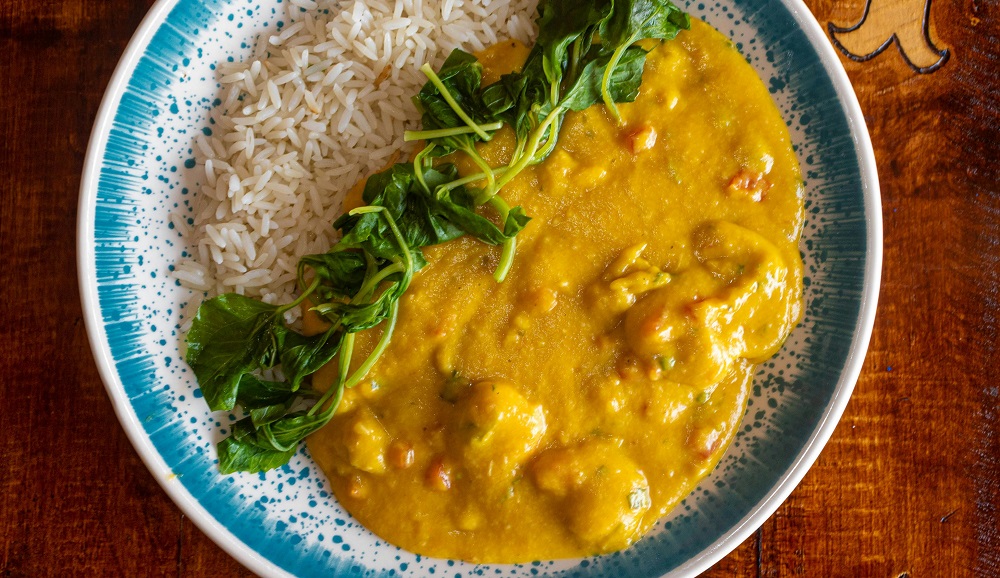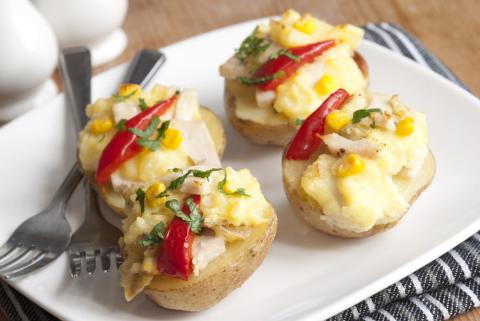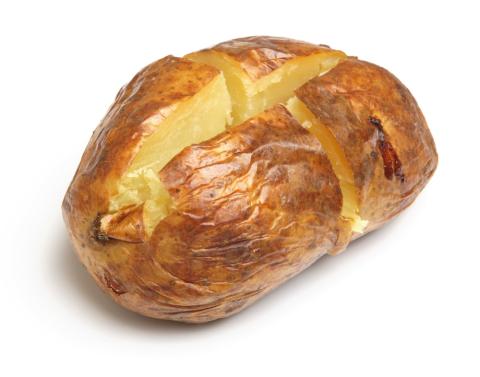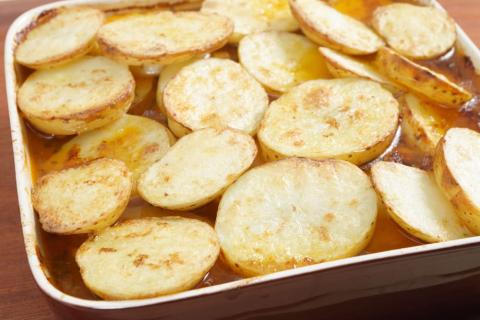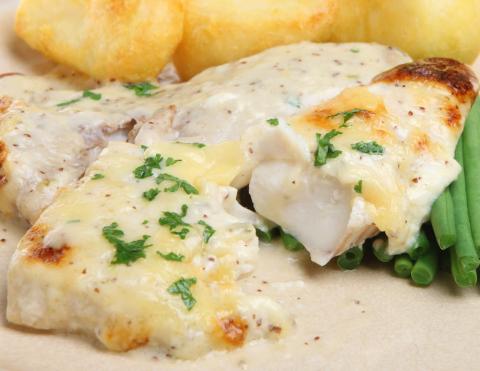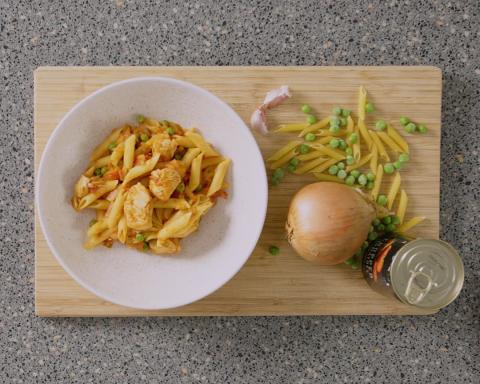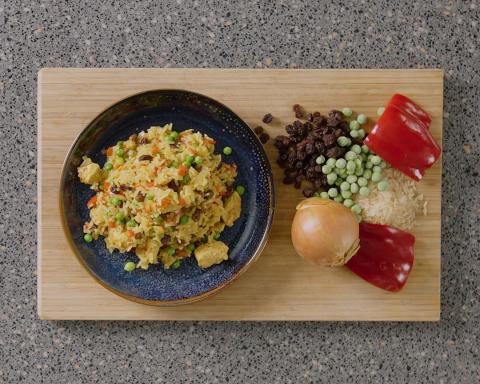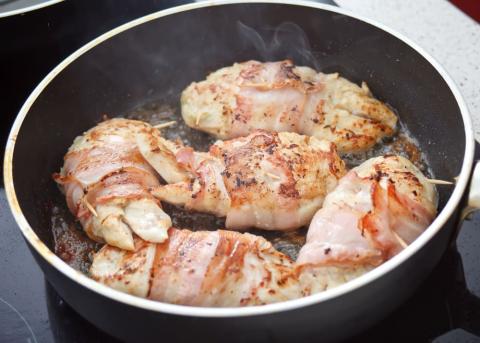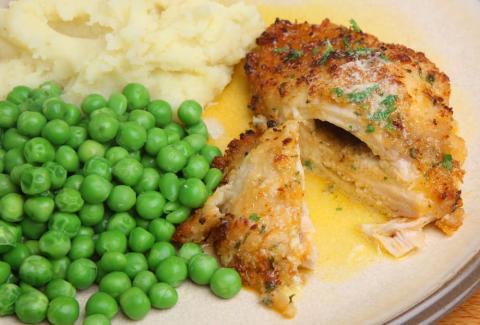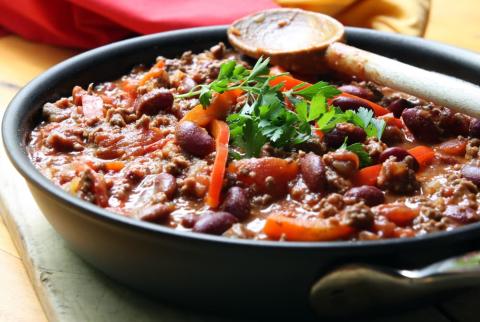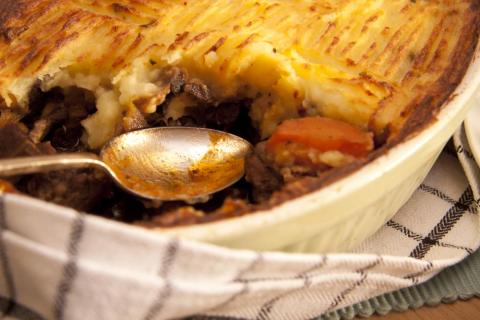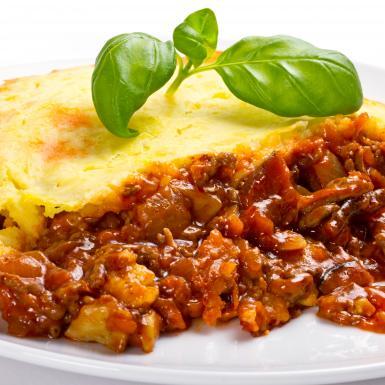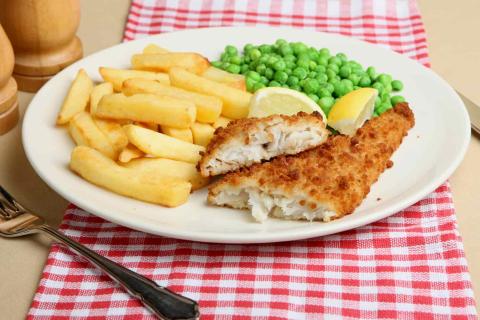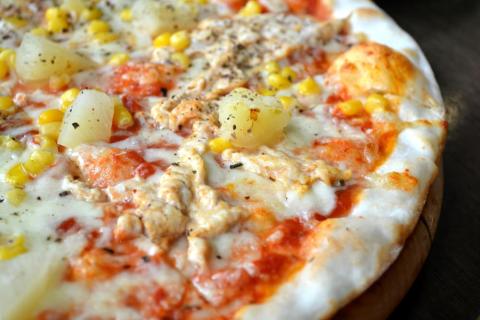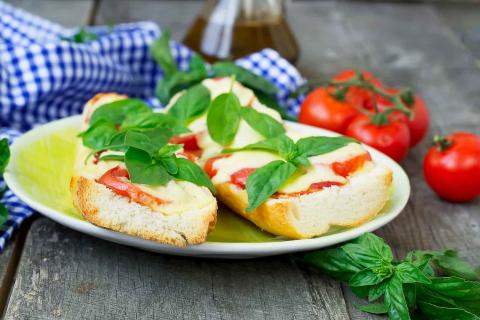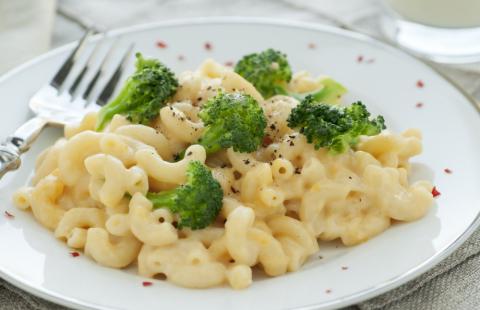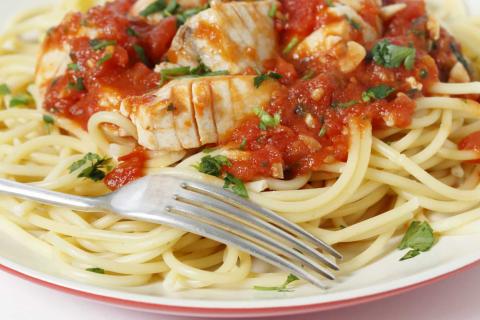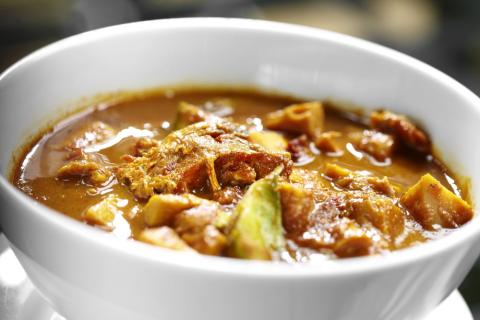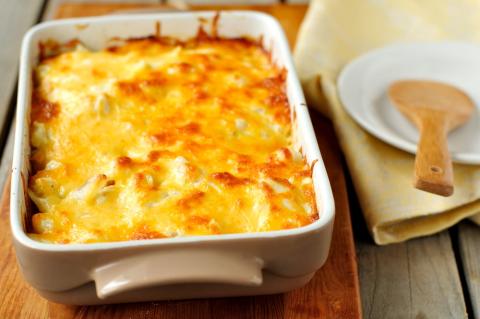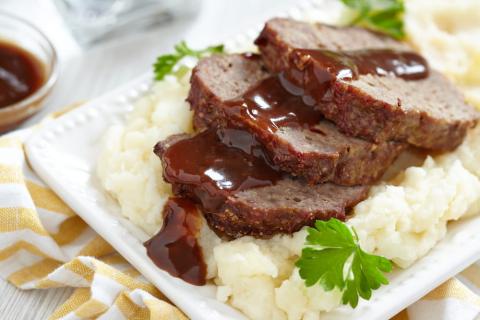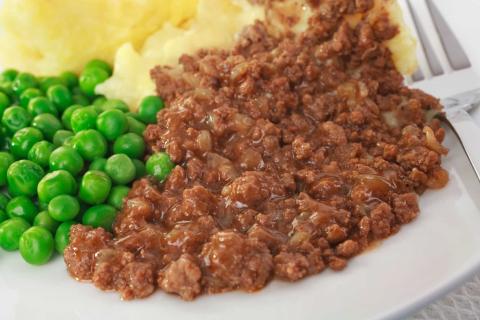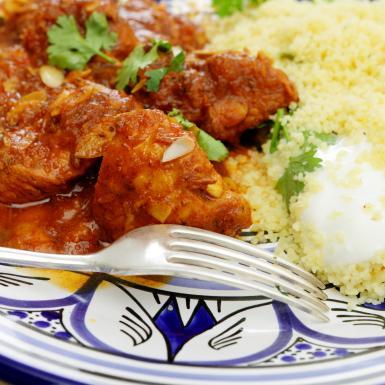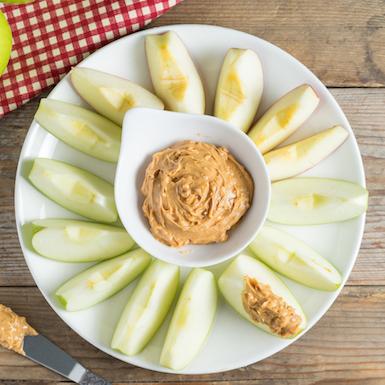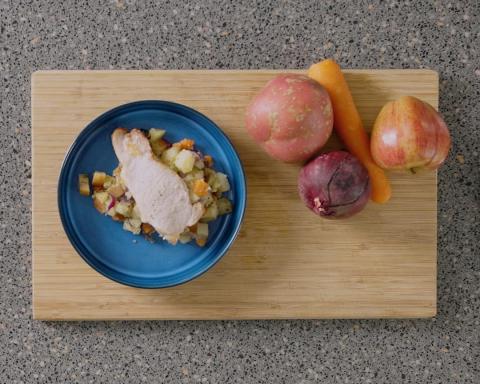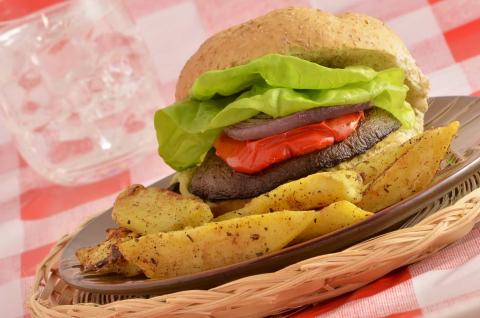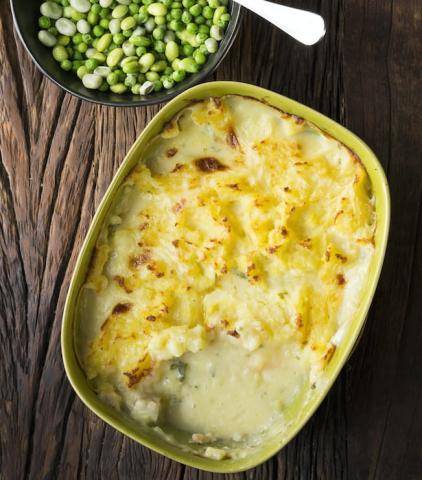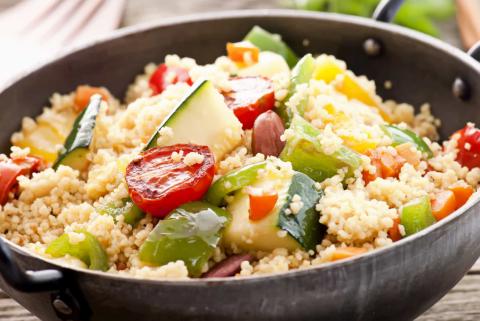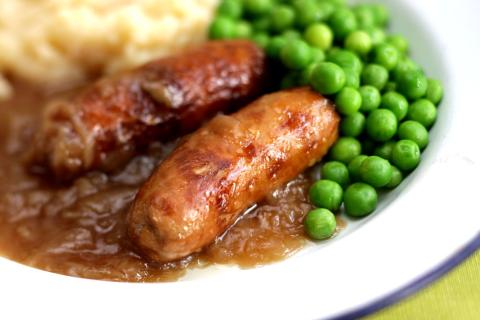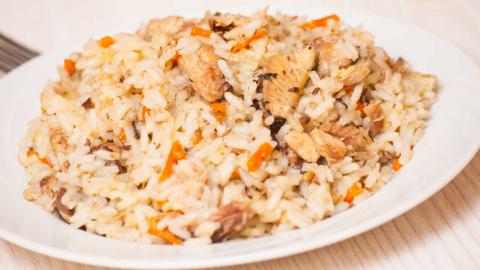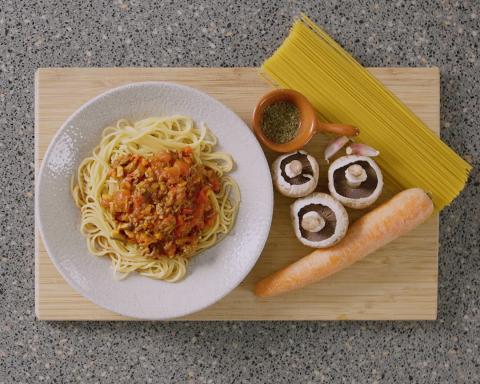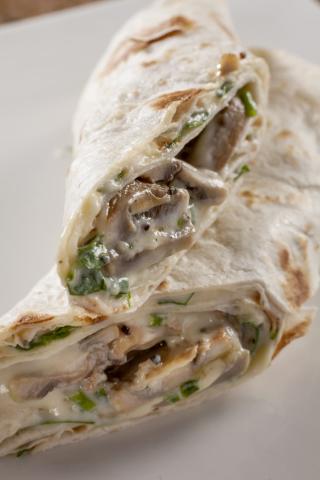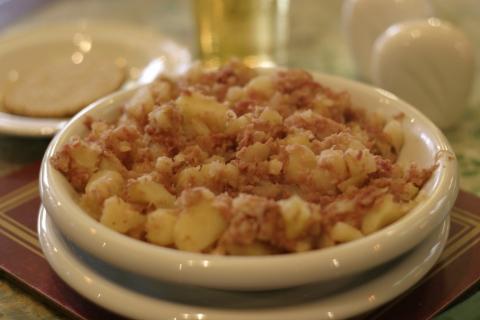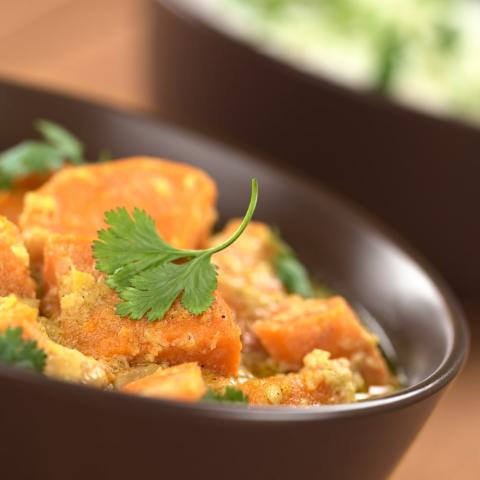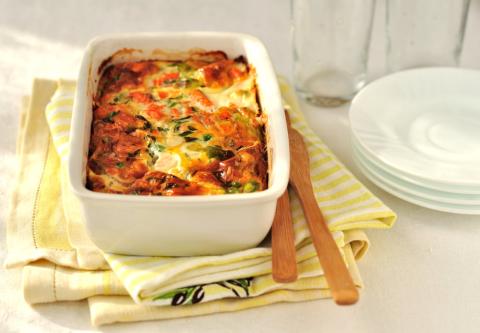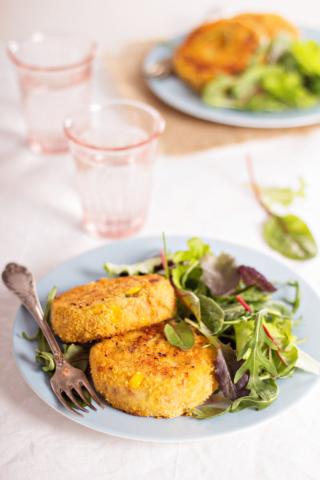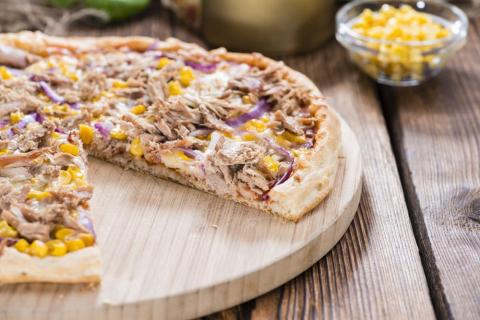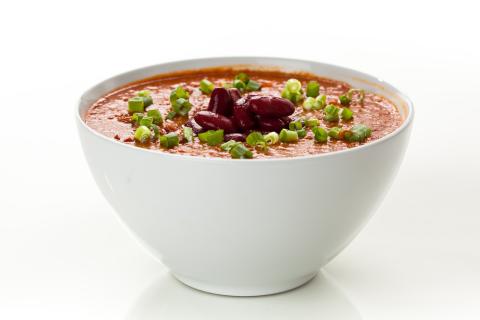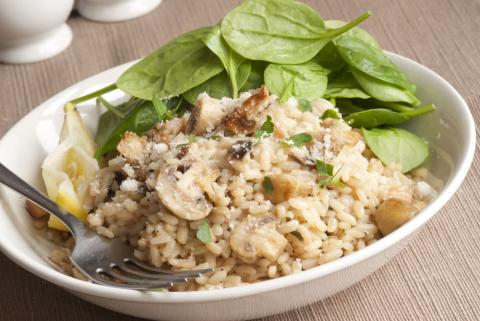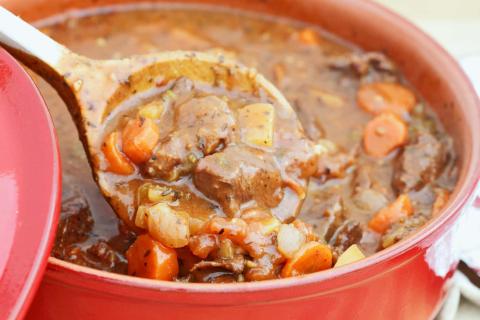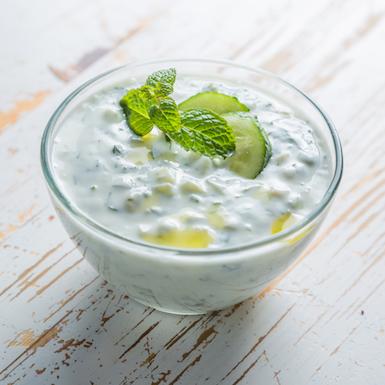- 3 Tablespoons (30g) Vegetable Oil
- 2 Tablespoons (18g) Medium Curry Powder
- 2 Tablespoons (18g) Ground Garam Masala
- 2 (300g) Onions
- 2 (6g) Garlic Cloves
- 2 (280g) Carrots
- 5 (450g) Potatoes
- 1 (700g) Cauliflower
- 5 (425g) Tomatoes
- 2 Tablespoons (30g) Tomato Puree
- 1 (7g) Reduced Salt Vegetable Stock Cube
- boiling (340ml) Water
- 3 Teaspoons (15g) Low Fat Spread
- (175g) Frozen Spinach
- 50 (50g) Whole Unsalted Cashew Nuts
Ingredients
Allergy Disclaimer
Always check the label of each ingredient for allergy warnings.
Method
- Set the oven to 180°C / 160°C fan oven / 350°F / gas mark 4.
- Spread out the cashew nuts in a single layer on a baking sheet and toast in the oven until golden for around 10-15 minutes.
- Meanwhile, peel and finely chop the onions and garlic. Wash and peel the carrots and potatoes. Slice the carrots and cut the potatoes into large cubes. Cut the cauliflower into florets and chop the tomatoes.
- Heat the oil in a large saucepan. Add the curry powder and garam masala and fry for around 5 minutes, stirring occasionally.
- Add the onions and garlic to the pan and fry for around 5 minutes until softened, stirring occasionally.
- Dissolve the stock cube in the boiling water and add to the pan with the carrots, potatoes, cauliflower, tomatoes, tomato puree and low fat spread. Bring to the boil, reduce the heat, cover and simmer for 20-25 minutes or until the vegetables are tender. Stir occasionally to stop the balti from sticking.
- Stir in the toasted cashew nuts and spinach and heat for 4-5 minutes.
- Serve hot.
Time Saver Tips
Don't peel the carrots or potatoes.
Cost Saver Tips
A good use of leftover vegetables! Choose the vegetables that are on offer.
Tips for Kids
Choose vegetables that they like, and don't use too much curry powder and garam masala. Get the children to spread the nuts out on the baking sheet ready to toast.
Nutritional Information
Based on a single serving of 549g (% of an adult's reference intake)
Energy
402 kcals ( 20 %)
1,681 kJ ( 20 %)
Fat
2.8 g ( 14 %)
Saturates
41.5 g ( %)
Sugar
18.3 g ( 20 %)
Salt
0.8 g ( 14 %)
Detailed nutritional information
| Per 100g | Per 549g serving | |
|---|---|---|
| Energy Kcals | 73 | 402 |
| Energy Kj | 306 | 1,681 |
| Protein | 2.3 g | 12.7 g |
| Total Fat | g | g |
| Saturated Fat | 0.5 g | 2.8 g |
| Carbohydrates | 7.6 g | 41.5 g |
| Total Sugars | 3.3 g | 18.3 g |
| NSP Fibre | 1.7 g | 9.3 g |
| Sodium | 60 mg | 331 mg |
| Salt | 0.2 g | 0.8 g |
Find out about nutritional labelling
Nutrition labels on the front of packaging
- Most of the big supermarkets and many food manufacturers display nutritional information on the front of pre-packed food.
- Front of pack nutrition labels provide information on the number of grams of fat, saturated fat, sugars and salt and the amount of energy (in kJ and kcal) in a serving or portion of a recipe.
- The labels also include information about reference intakes (expressed as a percentage) which are guidelines about the approximate amount of particular nutrients and energy required for a healthy diet.
- The colour coding tells you at a glance if the food has high (red), medium (amber) or low (green) amounts of fat, saturated fat, sugars and salt.
- The more greens on the label, the healthier the choice
- Amber means neither high nor low, so you can eat foods with all or mostly ambers on the label most of the time.
- Reds on the label means the food is high in that nutrient and these are the foods we should cut down on. Try to eat these foods less often and in small amounts.
Food shopping tips
If you’re trying to decide which product to choose, check to see if there's a nutrition label on the front of the pack. This will help you to quickly assess how your choices stack up. You will often find a mixture of red, amber and green colour coding for the nutrients. So when you're choosing between similar products, try to go for more greens and ambers and fewer reds if you want to make a healthier choice.
 Activities & Play
Activities & Play Behaviour
Behaviour Childcare
Childcare Development & Growing Up
Development & Growing Up Family, Friends & Relationships
Family, Friends & Relationships Feeding Your Baby
Feeding Your Baby Food & Eating
Food & Eating Health & Safety
Health & Safety Mental Health & Wellbeing
Mental Health & Wellbeing Money & Work
Money & Work Online Behaviour & Safety
Online Behaviour & Safety Pregnancy & First Days
Pregnancy & First Days School & Education
School & Education Sleep
Sleep

